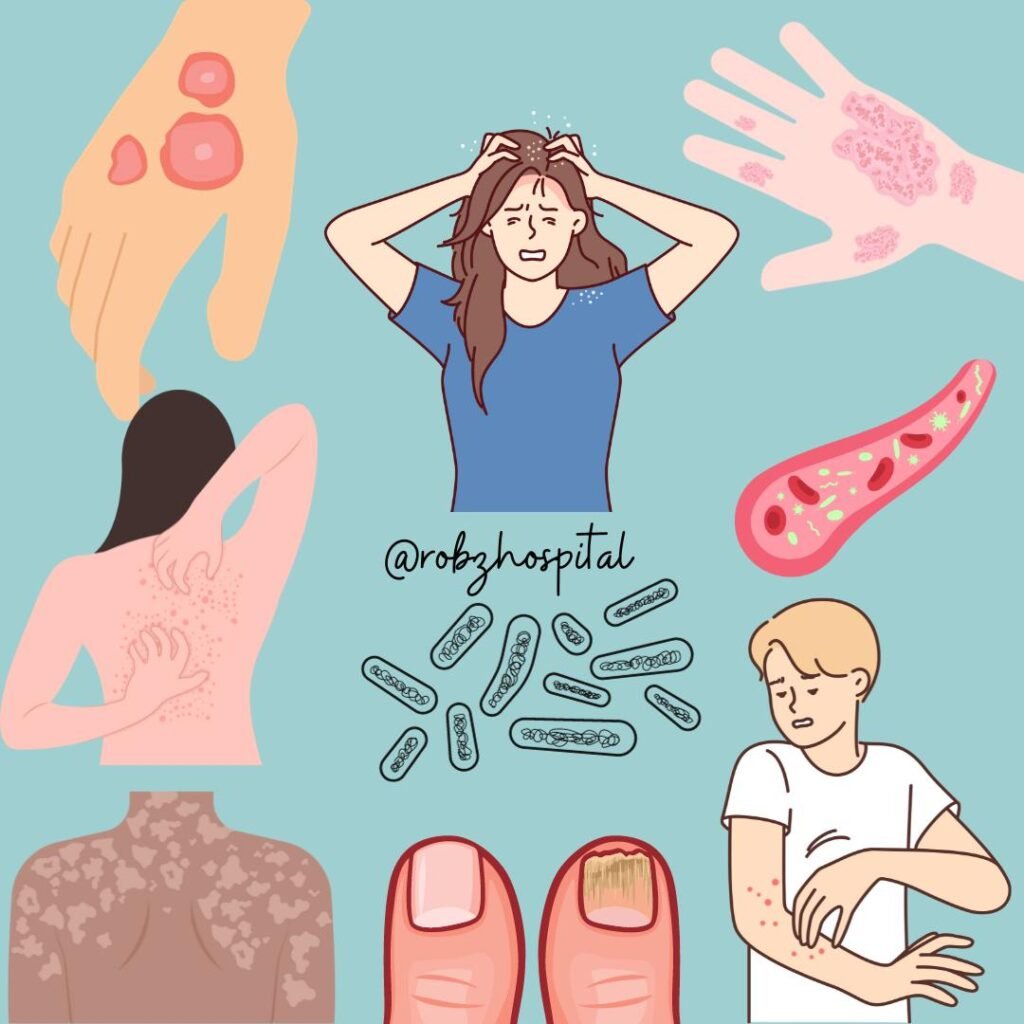
Introduction
Fungal infections, though often underestimated, can disrupt our lives and health in significant ways. In this blog, we’re going to explore the ins and outs of fungal infections, understanding what causes them, how to identify symptoms, effective prevention strategies, and the best treatments available. Let’s dive in!
What are Fungal Infections?
Defining the Culprit
Fungal infections, also known as mycoses, are caused by various types of fungi. These microscopic organisms thrive in different environments, and when they invade the body, they can lead to a wide range of health issues. Let’s take a closer look at the types of fungi that commonly cause infections and the areas of the body they affect.
Causes and Risk Factors
The Sneaky Invasion
Fungal infections develop when fungi find an opportunity to grow and multiply. Factors that contribute to fungal infections include compromised immune systems, prolonged antibiotic use, and environmental conditions. We’ll explore these causes and the risk factors that make certain individuals more susceptible.
Symptoms of Fungal Infections
Identifying the Enemy
The symptoms of fungal infections vary depending on the type and location of the infection. Common signs include itching, redness, and discomfort, but they can be more severe in some cases. We’ll break down the symptoms by type of infection and discuss when it’s crucial to seek medical attention.
Types of Fungal Infections
Understanding the Variety

Fungal infections come in different forms, each with its own set of characteristics. We’ll categorize them into skin and nail infections, respiratory infections, and systemic infections. Understanding these distinctions can help in both prevention and treatment.
Prevention and Control
Guarding Against Fungal Invaders
Preventing fungal infections involves personal hygiene, avoiding risk factors, and sometimes even vaccinations (when available). We’ll delve into the practical steps you can take to reduce your chances of falling victim to these infections.

Diagnosis
Spotting the Culprit
Diagnosing fungal infections often requires a combination of clinical examination, laboratory tests, and imaging in some cases. We’ll discuss how healthcare professionals determine the presence and extent of a fungal infection.
Treatment
Battling the Invaders
Effective treatment for fungal infections usually involves antifungal medications. However, there are also home remedies and self-care measures that can complement medical treatment. Surgical intervention may be necessary in certain situations, and we’ll cover that too.
Contact Our Fungal Infection Specialist Dr. N Singh and Dr. L B Prasad
Complications and Long-Term Effects
Dealing with the Aftermath
Complications can arise from untreated or severe fungal infections. We’ll explore potential complications, how to manage them, and the long-term effects that some fungal infections can have on the body.
Living with Fungal Infections
Coping and Thriving
Living with a fungal infection can be challenging, but there are strategies to help you cope. We’ll discuss dietary considerations, self-care tips, and the importance of seeking support from healthcare providers and support groups.
Global Impact and Research
Fungal Infections Worldwide
Fungal infections are not limited by borders. We’ll take a look at their prevalence worldwide and ongoing research efforts aimed at improving prevention, diagnosis, and treatment.
Conclusion
Empowering You Against Fungal Infections
In closing, fungal infections are more common than you might think, but armed with knowledge about their causes, symptoms, prevention, and treatment options, you can better protect yourself and your loved ones. Early detection and proactive measures can make all the difference. Stay informed, stay healthy!




